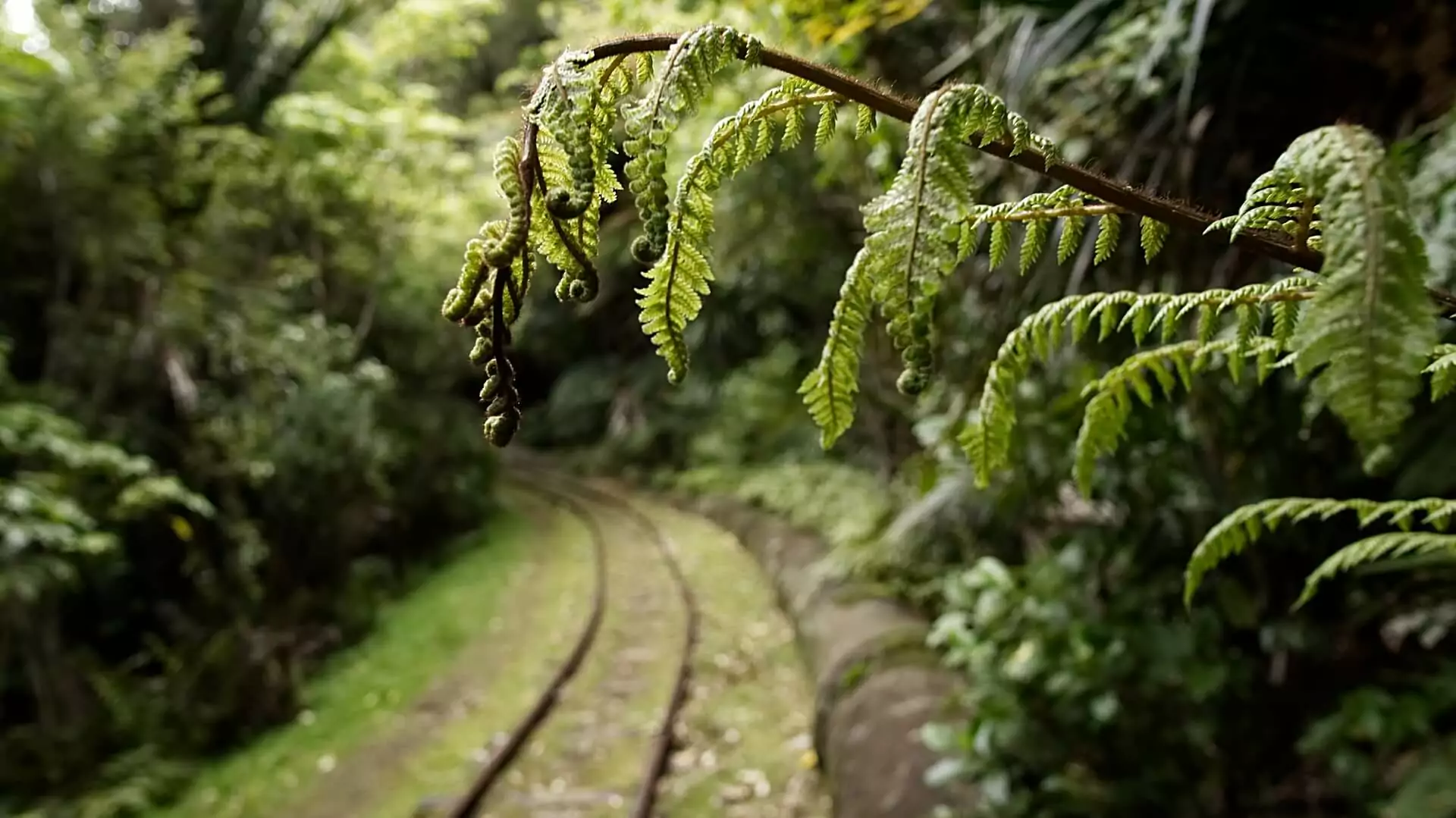Best Green Travel Tips

Ask almost anyone, and they’ll tell you the one thing they miss the most this year is travel. While we may all be missing jetting off to a new destination, the good news is that traveling less is quite good for the environment. It is no secret that travel — especially air travel — is detrimental to the environment because emissions contribute to our overall atmospheric greenhouse gases.
Still, travel enriches you and allows you to expand your worldview by seeing more than your little bubble of the planet. So the carbon footprint of travel isn’t enough to deter most of us from checking a few destinations off of our bucket list. But, are there steps we could take to travel more sustainably? How can we still hit the road or hop across the pond, just in a more eco-friendly way?
We must remember that virtually every decision we make impacts the environment in some way. When it comes to travel, it is easy for these decisions to build up. Transportation, the food you eat, the single-use items that make your travel days a bit more convenient, and even the luggage you use all have a carbon footprint. But don’t lose hope just yet!
These factors can be too overwhelming to consider, and honestly, most of us aren’t considering these aspects of trip planning. But as a tour company that strives to provide unforgettable experiences, we have a duty to protect the wild spaces we help so many explore safely. That’s why we put together our top green travel tips. You can apply these tips to any form of travel, not just adventure travel. Sometimes, the little changes make big differences.
Award Winning USA Hiking Adventures
Tips for Sustainable Packing and Transport

How eco-friendly your trip is will begin with how you plan and choose to travel. While not traveling at all may be the most eco-friendly, if you’re reading this, you’re likely going to be heading out for an adventure! So, before you pack your bags, consider these sustainable travel tips.
1. Buy Travel Gear Secondhand
You may already have a pack or suitcase, but if you’re thinking about getting new gear of any kind, consider buying secondhand first. While sorting through used gear can be more time consuming, in most cases, you will save money, too!
Buying anything secondhand – clothes, water bottles, luggage, etc. – helps save gear destined for the landfill and reduces the market for new products. Better yet, if you aren’t an avid traveler but you have a friend or family member who is, consider borrowing luggage and other items from them.
If you’re struggling to find gear that fits your needs at local secondhand shops, then consider online marketplaces such as eBay and Facebook. While having something shipped to you may not be the most environmentally friendly, you can narrow searches according to your location and opt to pick it up.
You also should never underestimate the possibility of finding a hidden gem at a pop-up yard sale either! Thrifting can be an adventure in itself, so get out there and see what you can find.
If you need to buy something new, look into their production, shipping, and repair policies. Are they doing their part to produce quality goods in the most sustainable way possible? Give your dollars to companies that are giving back to the planet.
2. Pack Light!
Packing light takes practice, but it is possible to enjoy an extended vacation carrying all you need in one backpack. All you need is a bit more planning, the right gear, and the patience to practice packing a few times.
Packing light is an eco-friendly and economic decision for many travelers. It saves weight if you are flying. Plus, you’ll have the freedom to take local forms of transportation like buses or trains instead of relying on taxis. Plus, you’ll get to skip checked baggage lines and save on fees on flights!
3. Pack Your Reusables
Another part of packing is making room for reusables like a water bottle, coffee/tea mug, a shopping bag, or even cutlery. Since you may not have access to a kitchen, especially on travel days, you’ll inevitably eat out once or twice, or at least need to get some water.
Cut down on single-use items by investing in some durable reusables. You’ll be able to enjoy using these both during and after your vacation. Again, you may be able to find some of these items at local thrift shops. If you choose to buy some reusable goods, support companies with ethical business practices.
If you can, remember to pack at least one shopping bag. Shopping at markets during your vacation gives you a chance to better immerse yourself in the local culture, helps you save money, and provides a fun morning activity.
4. Travel Locally
As we’ve already mentioned, not traveling at all is the most eco-friendly option, but we’re not going to ask you to do that. In 2020 especially, traveling locally has become far more popular due to COVID-19.
We may realize that we haven’t fully explored and experienced the area we live in because we often focus on faraway destinations. Most destinations in this category are within a days’ drive from your home and shouldn’t require flying or extensive travel of any kind.
Limiting the amount of transportation it takes to reach your destination makes local travel extremely eco-friendly, and it can help support your local economy. Remember that Wildland Trekking offers dozens of hiking tours across the U.S.A. and there may be one near you!
5. Travel by Land, Not Air
As mentioned in the last section, land travel is an excellent and slightly more sustainable option compared to air travel. Land travel includes driving a car, taking a bus, biking, hiking, or going by train. Naturally, we can’t hike or bike anywhere very fast, but a thru-hike or bike tour can be an excellent way to see a landscape and not contribute too much to your carbon footprint.
If biking or hiking isn’t a feasible option, then opt for a road trip, take the train, or hop on a short bus ride. Most of these options can reduce the distance you travel, and thus make your trip a little greener.
6. Travel Less and Stay Longer
If you can’t kick your travel bug for the sake of the planet, then you could take fewer trips per year but stay longer once you’ve arrived. You may decide on a month-long stay at your dream destination or maybe just a week-long trek instead of a weekend hike.
Since you’re investing in air travel and various other travel necessities, the longer the trip is, the more eco-friendly it becomes. After all, you could take three separate weekend trips around the country, but that would result in three separate bouts of flying. Whereas if you take one plane to the destination and stay for three weeks, not only do you get to experience more of the area, but you reduce your greenhouse gas emissions as well.
7. Ask Your Airline if They Recycle
When you are choosing to fly, flying with sustainability in mind is key. Most airlines don’t recycle, but some do. The best thing you can do is ask a steward when they come by to collect trash.
Most of the time if the airline doesn’t recycle, all recyclables and trash get grouped and thrown out as the same. With a little extra effort, you can take any recyclable items off the plane with you. Many airports have trash, recycling, and composting bins accessible for post-flight waste disposal. This one action provides minimal inconvenience to you and can elongate the life of a single-use item.
8. Consider Carbon Offsets
Any form of travel, even just driving to work each day, puts carbon into the atmosphere. That’s where carbon offsets come into play. Carbon offsets are what they sound like, for the amount of carbon your travels create, you pay a company to offset them to make it carbon-neutral travel.
These aren’t as expensive as you may assume! Most trustworthy companies that offer carbon offsets will help you calculate the amount of carbon offsetting necessary and price it out from there. In most cases, you can choose to offset individually for day-to-day activities as well as for specific items like airfare.
One example from Carbon Fund prices a carbon offset for a 10,000-mile flight at $20. They generally price flights according to pounds of carbon emitted. There are plenty of other options for carbon offsetting on their website. You can also check out prices and options at one of these other reputable companies: TerraPass and Native Energy.
Keep It Green When You Arrive

Once you’ve arrived, what more is there to worry about? Well, a few things. Flying is often considered the least sustainable part of travel, but there are plenty of other aspects to consider while traveling.
1. Walk, Bike, or Use Public Transportation
During most trips, we end up having to take a car, bus, or tram somewhere at some point. Even if it is just to and from the airport, there are ways we can make this form of transportation more eco-friendly.
Whenever possible, try to walk or bike. This tends to be more feasible if you are city hopping and looking to see the sights. In this case, walking and biking is a more intimate way to experience the city. These two options are the best when considering sustainability as they don’t produce any greenhouse gases.
If walking or biking is not a possibility, then consider taking public transportation. This could be a bus, train, or even rideshare. These forms of transportation produce less carbon per person because more people are utilizing the same vehicle. Using public transit also becomes much easier if you’ve packed light.
2. Say No to Animal Tourism
Now, you may be wondering, what does animal tourism have to do with greenhouse gases? Well, frankly, environmentalism and eco-conscious travel must go beyond carbon emissions and branch into the well-being of animals as well. The reason being is that many overrun tourist destinations creep into wildlands and destroy natural habitats for the sake of profit.
Many areas that allow tourists to pose with a tiger or ride an elephant will acquire these animals illegally and exploit them for profit. They are held in unnatural conditions and frequently mistreated. We certainly aren’t saying that all animal tourism locations are like this, but if you choose to participate in activities like such as these, be sure they are 100% ethical and have the animal’s best interests in mind. If the activity is being run by an ethical operation, they will usually be a non-profit, a sanctuary, or rehabilitation centers.
3. choose Voluntourism Very Carefully
Another prevalent form of travel these days is voluntourism. This seems ideal on the surface, but many hidden aspects do more harm than good. Yes, volunteering can be a very noble act, but when it becomes a profitable form of tourism, it is no wonder that some economic, human, and environmental harm takes place.
If you are set on doing good in the world, perhaps choose a trip that helps plant trees, take a philanthropy trek that helps rural areas recover from natural disasters, or donate to an organization that does some good in the world.
Find out as much as you can before you book a trip that centers around voluntourism or even ecotourism. In many cases, organizations exploit local economies, environments, and even people to get visitors to pay and “feel good” about spending a little extra on a trip that year.
4. Book with Sustainable Tour Companies and Hotels
Just as you should be careful about the type of animal tourism, ecotourism, and voluntourism you participate in, the same rules apply to general tour companies and hotels. Ecotourism is becoming more widespread, and in many places, like Costa Rica and Ecuador, it is almost the norm for all tour companies. Still, we have to be careful to watch out for greenwashing in those situations.
For tour companies, ethical practices branch from sustainability to how they treat their workers, especially if they contract local employees. This means fair wages and safe working conditions for their workers as well as environmentally sound practices. If they have a carbon offsetting program, that’s great, but don’t stop asking questions there!
Inquire about how they source their food for the tour, what types of transportation are they providing to get from place to place, if they handing out single-use items willy nilly, and if they encourage mindful shopping at local markets. All of these questions and more will give you a good idea of what to expect and their general intentions.
When looking into lodging, know that many big-name hotels aren’t the most environmentally friendly. It is also hard to know if a mom and pop place is either. Before booking just any old hotel chain, it is wise to consider a homestay or even a room share situation like a hostel. The simple act of fitting more people into one space is better for the environment because fewer resources are required.
If that isn’t possible for you, then seriously look into how the hotel you choose operates. Find out how they power the building, do they use renewable energy? Do they offer meals, and if so, how do they handle food sourcing and waste? What amenities are offered? Do they use a standard septic system or a composting system? Depending on the part of the world you’re visiting, finding self-sufficient lodging will be easier, but if you’re serious about sustainable travel, always ask.
5. Leave the “Do Not Disturb” Sign on Your Hotel Door
If you decide to stay in a hotel without a shared room, and you’re there for a few days, choose to put the “do not disturb” sign on your door. This prevents the housekeepers from coming to clean your room every single day. After all, you probably don’t clean your bedroom at home every single day, so you likely don’t need your hotel room cleaned daily.
This prevents the hotel staff from replacing the towels, soaps, using more cleaning products, and washing all of the bedding. These small actions add up to use far more resources than is necessary for you to enjoy your stay.
6. Shop Local
It is easy to opt for convenience when you’re on the road, but one of the most environmentally friendly things you can do when you travel is to support local businesses. Avoid large chains and head for a local, more authentic experience.
Staying in locally-owned hotels, purchasing souvenirs from local artisans, and buying necessities like toothpaste from a family-owned shop are all great ways to boost that local economy and help save a few carbon emissions from shipping costs as well.
7. Cook When You Can
Having a few nights where you eat out at a local restaurant can be a great way to immerse yourself in the local culture, but it isn’t always very sustainable for the planet or your wallet. Not everyone will have access to a kitchen, but if your lodging has one, take advantage of it.
Take time to shop at the market, plan meals, and pack lunches. All of these tasks cut down drastically on food waste, avoid the use of many single-use plastics, and is sure to save you money during your trip.
Remember, Before You Leave …

1. Leave No Trace
Leave no trace principles apply to more than just the outdoors. In some parts of the world, local waste systems are antiquated, and essentially, everything goes to a landfill. It helps to do some research before the trip to find out how that country handles waste. Even some parts of the United States don’t recycle anymore!
Knowing how waste is handled in that part of the world will help you decide on what to purchase and how you handle the item when you’re finished. For instance, if you get a coke in a can, but you know that there is nowhere to recycle the item, you could bring it home with you or at least to the airport where a recycling service is in place.
A better alternative is not to purchase that item at all, but many of us enjoy a creature comfort or two when we’re on the road.
The same goes for trips into the backcountry. You should plan to pack out all of your trash, and in some cases, human waste as well. In the end, as stewards of the Earth, we should leave it better than we found it.
2. Bring Home Any Extra Soap From the Hotel
Those little, nearly single-use soaps that hotels inevitably provide every room are very wasteful. However, if it is offered to you, at the very least, use it all. If you only use half of it and then leave it behind, they will throw the remainder away. Some of the shampoo and lotion bottles can be reused or recycled in certain areas, so bring it home, use it, and dispose of the container correctly.
3. Donate Things You Can’t Bring Home With You
It is tempting to want to give local beggars, especially children, money before you leave. However, this fosters a toxic environment for both tourists and locals alike. Consider donating extra money to a trustworthy charity that is directly helping the community, so you know how the money is used. If you have clothing or food, donate them to a shelter that can give them to people the most in need.
If you are planning to toss the item, think about if it is worth donating and if someone else could use it – even if it is secondhand.
Reduce, Refuse, Rethink
![]()
We are very used to thinking of “reduce, reuse, recycle” when we think of the three R’s. However, for travel, and most life endeavors, a new phrase can help you make sustainable choices: reduce, refuse, and rethink.
Reduce the amount of waste you produce by reducing the number of items you buy. This goes for travel-related things like clothes and luggage as well as single-use items on the road.
Refuse to travel as far or use wasteful transportation in order to produce fewer greenhouse gases, and refuse to engage in unsustainable tourism practices.
Rethink the way you travel to get the most out of the experience, and to create the least amount of harm along the way.
Have a safe and green adventure!




